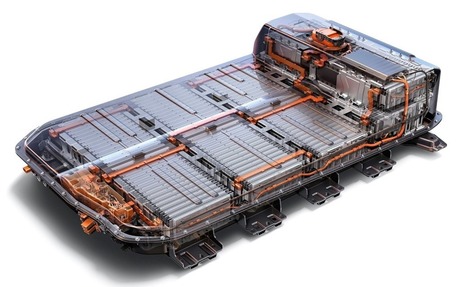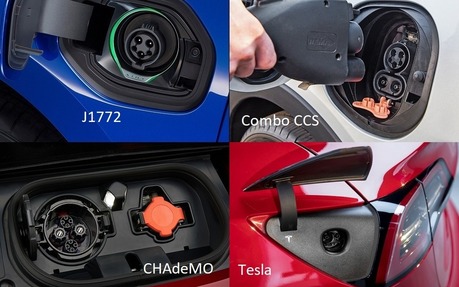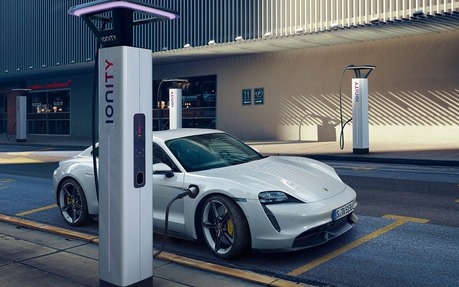Electric Cars: Key Terms Explained
You know what displacement, horsepower and L/100 km all mean. These automotive terms exist since, well, pretty much the invention of automobiles.
Electric cars are a different creature, however. They have their own unique features and a unique vocabulary.
A Few Definitions
Fossil fuels are out, electrons are in! Let’s start with a few important terms and their definitions to better understand electric cars.
- Electric tension: also called voltage, measured in volts (V).
- Electric current: refers to the flow of electrons through a given conductor, measured in amps (A).
- Power: equal to the voltage multiplied by the current, measured in watts or kilowatts (W or kW).
- Energy: equal to the power multiplied by the time in hours, measured in kilowatts per hour (kWh).
Kilowatts indicate a capacity to transfer energy and kilowatts per hour indicate the amount of energy effectively transferred. It’s like water pipes: the bigger the pipe, the more water can flow through it. Energy refers to the amount of water that goes through the pipe for a given period of time.
What you need to remember especially is that kW and kWh are the most commonly used units of measurement when it comes to electric cars. Understanding the differences between the two is critical.
Electric Motors
Unlike internal combustion engines, electric motors are fairly simple. You don’t have to worry about displacement, cylinders, valves, turbochargers and whatnot. There’s not even a transmission (except in the case of the Porsche Taycan).
An electric motor’s output is measured in kilowatts. Companies that build electric cars continue to talk about horsepower because consumers are still more familiar with that type of unit. The equation is as simple as hp = kW x 1.369, so a 100-kW motor produces 136 horsepower.
Here are three more examples:
- Nissan LEAF SV: 110 kW / 147 hp
- Tesla Model 3 Standard Plus: 211 kW / 283 hp
- Porsche Taycan Turbo S: 460 kW / 616 hp (without overboost)
Torque, meanwhile, continues to be measured in pound-feet (lb-ft).
Batteries
As far as batteries are concerned, the key figure is the energy they can store. It’s like the size of a gas tank on conventional automobiles: the bigger the tank, the more range you have.
Battery capacity is expressed in kWh. The higher the number, the longer the battery will operate. In the case of the three cars listed above, the battery is rated as follows:
- Nissan LEAF SV: 40 kWh
- Tesla Model 3 Standard Plus: 60 kWh
- Porsche Taycan Turbo S: 93.4 kWh
While fuel consumption (L/100 km) indicates a gas-powered car’s efficiency, range is the critical metric for their electric counterparts. There are various standards and protocols to determine range—NEDC in Europe prior to 2019, WLTP in Europe, India, Korea and Japan, and EPA in the U.S. The latter is the more realistic standard for us in North America. You can also check the website ot Natural Resources Canada.

Charging
You’ve never had to care about the size of a gas tank nozzle before, but with electric cars, not all charging solutions are created equal.
There are currently three levels of charging:
- Level 1: This is done via regular 120V power outlets and requires an on-board charger (supplied by the manufacturer). Typically, you can get anywhere between 0.96 kW and 1.44 kW of power. A full charge of a Nissan LEAF with a battery of 40 kWh is extremely long (about 35 hours), so this works only as a backup solution.
- Level 2: This is done via dedicated 240V outlets. Depending on the electrical setup and the capacity of your onboard charger, you can get as much as 9.6 kW of power. In the case of the LEAF, a full charge takes eight hours. It’s the daily charging solution recommended by manufacturers.
- Level 3: Also called fast charging, this is done via 400V charging stations using DC current (level 1 and level 2 rely on AC current). Depending on the type of station and the capacity of the vehicle, you can get as much as 50 kW of power (150 kW in the case of some Tesla Superchargers). This type of charging takes a toll on batteries and should not be used on a daily basis. That’s why you often see manufacturers talk about charging the battery to 80 percent, which usually requires less than an hour).

As for connectors, there are four different types in North America.
- J1772: It’s the North American standard for level 1 and level 2 charging and the most commonly used type of connector with electric cars.
- CCS: Based on the J1772, CCS features two extra DC pins for level 3 charging.
- CHAdeMO : It’s the Japanese standard for level 3 charging, used by the Nissan LEAF and Kia Soul EV, for instance.
- Tesla: Tesla has its own network of charging stations (called Superchargers) and its own type of connector. Tesla owners who use them don’t need an adaptor. However, when they plug into another charging station, they need a Tesla/J1772 adaptor for level 1/level 2 charging or a Tesla/CHAdeMO adaptor for level 3 charging. Both are supplied by the company.
So there you go. Hopefully this will make your next electric car purchase easier!
